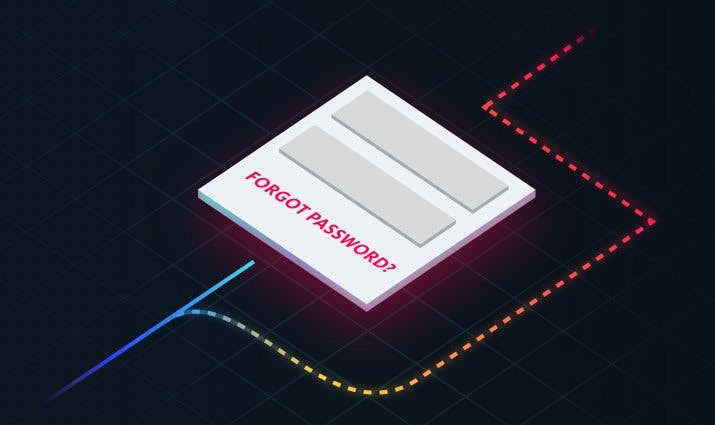
Hey guys, Rocky here! 🎟️🔓
Welcome to Day 8 of the Daily Web Hacking series! We’ve covered file upload vulns, XSS, and CSRF. Today, we’re diving into Part 8: Authentication Bypass—the art of sneaking into systems without a password. Imagine walking into a VIP concert with a fake wristband. Let’s break down how hackers do it!
—
What is Authentication Bypass?
Authentication bypass is a vulnerability that lets attackers log in as any user (including admins) without knowing their password. By exploiting flaws in login logic, hackers can:
- Access sensitive data (emails, credit cards).
- Escalate privileges (user → admin).
- Hijack accounts (social media, banking).
Why it’s dangerous:
- #2 in the OWASP Top 10 (2021).
- Affects 1 in 3 web apps (Veracode, 2023).
- Often leads to full system compromise.
—
How Authentication Works (and Breaks)
A typical login flow:
- User enters username/password.
- Server checks credentials against a database.
- If valid, the server grants a session cookie.
The vulnerability: When any step in this process fails to validate properly. Let’s explore the cracks.
—
Types of Authentication Bypass
1. Credential Brute-Forcing
- What: Guessing weak passwords or usernames.
- Tools:
- Hydra: Brute-force logins via HTTP, FTP, SSH.
- John the Ripper: Crack password hashes.
Example:
hydra -l admin -P rockyou.txt hacklivly.com http-post-form "/login:username=^USER^&password=^PASS^:Invalid credentials"
Defense:
- Rate limiting: Lock accounts after 5 failed attempts.
- Strong passwords: Enforce complexity rules.
—
2. SQL Injection in Login Forms
Example:
- Username:
admin' --
- Password: [Anything]
Defense:
- Parameterized queries: Use prepared statements.
- Input sanitization: Block special characters.
—
3. Cookie/Session Hijacking
- What: Stealing session cookies to impersonate users.
- How:
- Sniff cookies via XSS or MITM attacks.
- Edit cookies to escalate privileges.
Example:
- Change
Cookie: role=user → Cookie: role=admin.
Defense:
- HttpOnly cookies: Block JavaScript access.
- Secure cookies: Transmit only over HTTPS.
—
4. Parameter Tampering
Defense:
- Server-side validation: Never trust client-side inputs.
—
5. 2FA Bypass
- What: Skipping two-factor authentication steps.
- Techniques:
- Response manipulation: Change
2fa_success=false → true.
- Code reuse: Exploit OTPs that don’t expire.
Example:
- Log in with valid credentials.
- Intercept the 2FA request with Burp.
- Forward the request without entering the OTP.
Defense:
- Time-based OTPs: Use TOTP (e.g., Google Authenticator).
- Rate limit OTP guesses.
—
6. Password Reset Flaws
- What: Hijacking password reset functionality.
- Common flaws:
- Token leakage: Tokens in URLs → Sniffed via Referer headers.
- Weak token entropy: Predictable reset tokens (e.g., time-based).
Example:
Request a password reset for victim@site.com.
Use Burp to brute-force the reset token:
GET /reset-password?token=§123456§
Defense:
- One-time tokens: Expire after use.
- Secure token generation: Use cryptographically random strings.
—
Real-World Authentication Bypass Disasters
- Facebook (2013): A flaw let attackers post on any profile via parameter tampering.
- Uber (2016): Hardcoded credentials in GitHub repos granted admin access.
- Twitter (2020): SMS-based 2FA bypass led to celebrity account hijackings.
Lesson: No one is immune.
—
Step-by-Step Attack: Bypassing Login via SQLi
Target: A vulnerable login form at https://hacklivly.com/login.
Intercept the Request:
POST /login HTTP/1.1
...
username=user&password=pass
Inject SQLi Payload:
username=admin' --&password=anything
Forward the Request:
Result: Full admin access!
—
Advanced Bypass Techniques
1. Boolean-Based Blind Attacks
Use Case: When errors aren’t displayed, but you can infer results.
Example:
admin' AND SUBSTRING((SELECT password FROM users LIMIT 1),1,1)='a' --
2. LDAP Injection
3. JWT Tampering
- What: Modify JSON Web Tokens (JWTs) to escalate privileges.
- Tools:
- jwt_tool: Crack/forge JWTs.
- Burp JWT Editor: Edit tokens in Burp.
Example: Change:
{ "role": "user" }
→
{ "role": "admin" }
—
Tools for Authentication Testing
1. Burp Suite
- Intruder: Brute-force logins.
- Repeater: Test parameter tampering.
2. OWASP ZAP
- Automated scanning for login flaws.
3. Hashcat
- Crack password hashes (MD5, SHA1, bcrypt).
—
Defending Against Authentication Bypass
For Developers:
- Input Validation:
- Sanitize ALL user inputs (even hidden fields).
- Secure Session Management:
- Use random session IDs and store them securely.
- Multi-Factor Authentication (MFA):
- Implement TOTP or hardware keys (e.g., YubiKey).
- Password Policies:
- Require 12+ characters, mix of letters/numbers/symbols.
For Admins:
- Log Monitoring:
- Alert on multiple failed logins or unusual activity.
- Regular Pen Testing:
- Hire ethical hackers to find flaws.
- Patch Management:
- Update frameworks (e.g., Spring, Django) to fix known vulns.
—
Practice Legally: Labs & Challenges
- DVWA (Damn Vulnerable Web App):
- Practice bypassing login on a local setup.
- PortSwigger Labs:
- Hack The Box:
- Machines like Access and Jerry focus on auth flaws.
—
Ethical Hacking & Reporting
Never exploit auth bypass flaws without permission. If you find one:
- Document: Record steps to reproduce.
- Report: Use the site’s security contact or bug bounty program.
- Disclose: Wait for a fix before sharing publicly.
—
What’s Next? Part 9: Server-Side Request Forgery (SSRF)
Tomorrow, we’ll explore SSRF—tricking servers into fetching internal resources. Sneak peek:
GET /proxy?url=http://169.254.169.254/latest/meta-data/ HTTP/1.1
—
Final Thoughts
Authentication bypass is the skeleton key of hacking. It’s simple in theory but devastating in practice. By understanding how logins break, you can build systems that stand tall against attacks. Remember: Security isn’t a feature—it’s a mindset.
Rocky signing off! ✌️
—
P.S. If you’re loving this series, share it with your hacking crew! Let’s turn newbies into security warriors.
Discussion Question: What’s the craziest auth bypass you’ve seen? I once found a site where password=password worked for every account. 😅 Spill your stories below! 👇